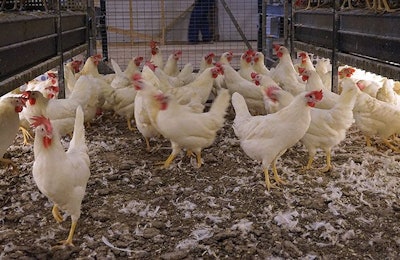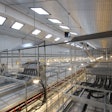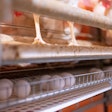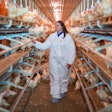
Recruiting, training and retaining employees was one of the cage-free layer management topics discussed by four managers for egg producing companies at the Egg Industry Center’s Issues Forum in Scottsdale, Arizona, on April 18, 2018. Participating on the panel were Dan Krouse, general manager, Midwest Poultry Services; Darrin Eckard, complex manager, Iowa Cage Free; Brett Pickar, regional operations manager, Daybreak Foods; and Mike Gemperle, vice president, Gemperle Family Farms.
Training, for both the birds and employees, is one of the keys for successful cage-free egg production. Pickar said it was important to expose employees to the cage-free housing systems early in the process. If possible, you should send them to another facility to train before you put a flock under their care in either a new or converted house. If you are transitioning an existing farm from cage to cage free, Pickar said it is important to make sure that all of the staff understand the reason for the switch to cage free. Because of some of the negative comments made about cages in the press by activists, we need to reassure everyone working on the farm that they weren’t doing a bad job caring for the hens in cages before.
The panelists were asked how much more labor is required to manage cage-free hens. The consensus answer was three to five times more labor, depending on the type of cage-free housing system used. Systems with doors that are used to contain hens early in the day can reduce labor needs since they also serve to reduce floor eggs. The panelists agreed that it is crucial that pullets be raised in a housing system that trains them for the type of aviary they will be in once they arrive in the layer house.
















